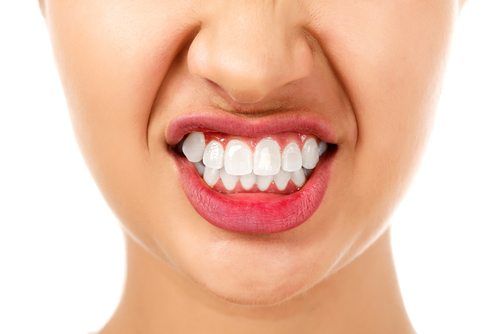DIAGNOSIS
During regular dental exams, your dentist likely will check for signs of bruxism. If you have any signs, your dentist will look for changes in your teeth and mouth over the next several visits to see if the process is progressive and to determine whether you need treatment.
If your dentist suspects that you have bruxism, he or she will try to determine its cause by asking questions about your general dental health, medications, daily routines and sleep habits.
To evaluate the extent of bruxism, your dentist may check for:
- Tenderness in your jaw muscles
- Obvious dental abnormalities, such as broken or missing teeth or poor tooth alignment
- Damage to your teeth, the underlying bone and the inside of your cheeks, usually with the help of X-rays
A dental exam may detect other disorders that can cause similar jaw or ear pain, such as temporomandibular joint (TMJ) disorders, other dental problems or an ear infection.
If your dentist suspects a significant psychological component to your teeth grinding or a sleep-related disorder, you may be referred to a therapist, counselor or sleep specialist. A sleep specialist may conduct more tests, such as assessment for sleep apnea, video monitoring and measuring how often your jaw muscles tighten while you sleep.
TREATMENTS
In many cases, treatment isn’t necessary. Many kids outgrow bruxism without treatment, and many adults don’t grind or clench their teeth badly enough to require therapy. However, if the problem is severe, treatment options include certain dental approaches, therapies and medications. Talk to your doctor about what may work best for you.
Dental approaches
If you or your child has bruxism, your doctor may suggest ways to preserve or improve your teeth. Although these methods may prevent or correct the wear to your teeth, they may not stop the bruxism:
- Splints and mouth guards. These are designed to keep teeth separated to avoid the damage caused by clenching and grinding. They can be constructed of hard acrylic or soft materials and fit over your upper or lower teeth.
- Dental correction. Correcting teeth that aren’t properly aligned may help if your bruxism seems to be related to dental problems. In severe cases — when tooth wear has led to sensitivity or the inability to chew properly — your dentist may need to reshape the chewing surfaces of your teeth or use crowns. In certain cases, your dentist may recommend braces or oral surgery.
Therapies
Certain therapies may help relieve bruxism, such as:
- Stress management. If you grind your teeth because of stress, you may be able to prevent the problem with professional counseling or strategies that promote relaxation, such as exercise or meditation.
- Behavior therapy. Once you discover that you have bruxism, you may be able to change the behavior by practicing proper mouth and jaw position. Ask your dentist to show you the best position for your mouth and jaw.
- Biofeedback. If you’re having a hard time changing your habits, you may benefit from biofeedback, a form of complementary medicine that uses monitoring procedures and equipment to teach you to control muscle activity in your jaw.
Medications
In general, medications aren’t very effective for treatment of bruxism, and more research is needed to determine their effectiveness. Examples of medications that may be used for bruxism include:
- Muscle relaxants. In some cases, your doctor may suggest taking a muscle relaxant before bedtime, for a short period of time.
- OnabotulinumtoxinA (Botox) injections. Botox injections may help some people with severe bruxism who don’t respond to other treatments.
If you develop bruxism as a side effect of a medication, your doctor may change your medication or prescribe a different one.


